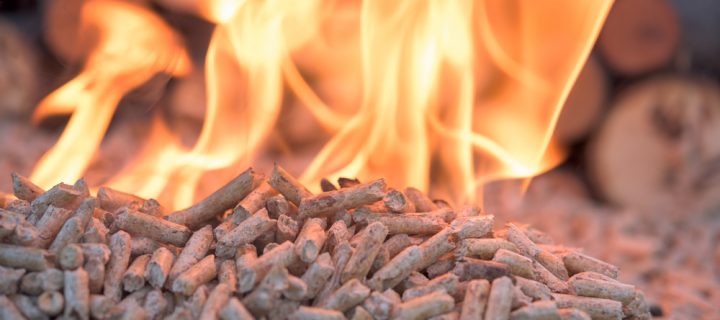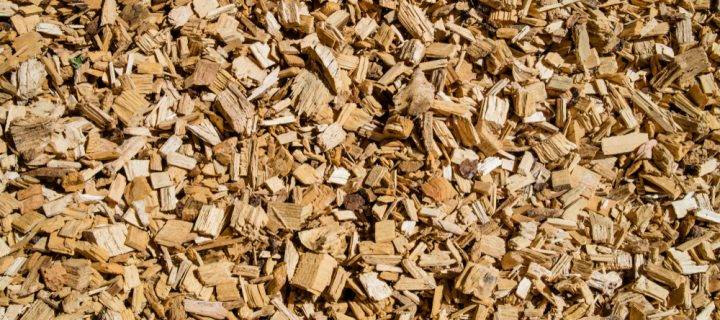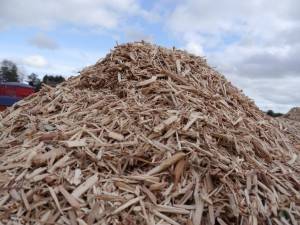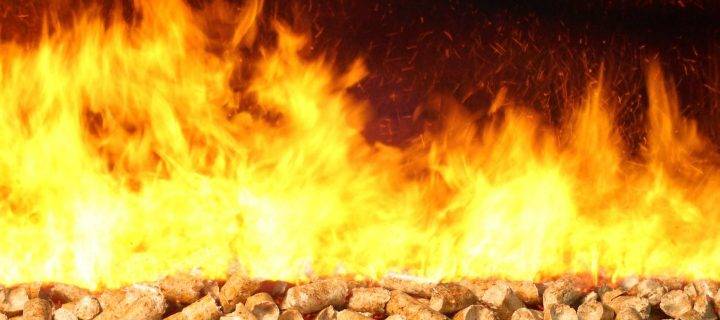Biomass fuel encompasses a number of materials that include wood and other agricultural residues. The materials in question can be used for heating buildings and to a lesser extent, for producing power. Biomass can also, if required, produce a combination of heat and power, which only further illustrates it’s efficiency and all round usefulness. On the other hand, biomass systems require more operator information than other forms of renewable energy such as solar or wind and a small amount of maintenance plus an annual inspection and cleaning means the system can provide heating when needed. Additionally, biomass combustion produces emissions that have to be monitored to make sure they comply with government regulations. While these are only slight caveats, there is little question that biomass systems are more than fit for purpose. Because biomass systems are so popular and because there is sometimes a slight trepidation when it comes to making the switch, we thought it good to touch on the various components of a biomass fuel system. What Are The Different Parts of a Biomass System? There are a number of key components to a biomass system which includes the following – Fuel storage and handling or conveying Combustor Boiler Fire suppression systems Pumps Fans Exhaust controls System controls Automatic ash handling (optional feature) Back up boiler Heat distribution system All biomass systems require storage for fuel as well as a way of handling the fuel. Systems that use wood chips or pellets will be stored in silos or a bunker with an automated system that moves fuel from the storage area to the combustion area. PH Winterton recommends that storage areas hold a minimum of three days of fuel at all times. The day hopper is the last part of the fuel handling system and controls the rate at which the fuel is delivered to the boiler. Wood pellet or log systems the heat created by the boiler can be used to directly heat the air or used to heat water, acting as a medium by which the heat is delivered. Fire suppression systems help to prevent fire from the combustor travelling back up the conveyor system where fuel is stored. This type of system can also...
Read Moreabout What Are The Main Components of Biomass Fuel Boilers?Biomass fuel in Staffordshire promises to be very important in 2022. Back in 2016, the UK government announced the new green deal in a plan to drastically reduce the UK’s carbon footprint towards a more general push to be environmentally aware. Accompanying this is the four year plan announced by Staffordshire county council in late 2021. The plan details a number of measures we can take to reduce carbon emissions and tackle the ever increasing threat of climate change. A key goal of the aforementioned plan is to have a net 0 carbon emissions by 2025. Part of the plan includes transferring all council owned cars to electric models and increasing the awareness of tree planting. This plan underpins the general push to be more environmentally friendly in the county. At PH Winterton, we would like to highlight a very effective way of reducing our carbon footprint in Staffordshire, this being the use of biomass fuel. We are proud to be on the approved biomass fuel supplier’s list from the UK government. We would like to take this opportunity to highlight a few key features of why biomass fuel is important and how it can help reduce carbon emissions. Biomass Fuel vs Fossil Fuels It might go without saying but biomass fuels are a fantastic alternative to fossil fuels when it comes to reducing our environmental impact. It is reported that biomass fuel produces 93% more reusable energy compared to fossil fuel. Furthermore, on a slightly separate note but no less relevant, biodiesel reduces GHGs by 41% compared to typical diesel. We believe these facts are sufficient to showcase that bioenergy is a fantastic alternative to traditional fuel types. P16 & P35 Here at PH Winterton we offer two main types of biomass fuel; that being p16 and p45. Biomass fuel p16 which is smaller size wood chippings and p35 which is grade of wood with no contaminants present. Accompanying this is the quality supply of biomass fuel p16 in Derbyshire, Staffordshire and other local areas. So why don’t you get in contact with the largest supplier of biomass fuel p35 in Staffordshire. Reliability One of the key questions asked is whether biomass fuel is reliable? Accompanying these are...
Read Moreabout Why Choose Biomass Fuel in Staffordshire?Here at PH Winterton and Son, we know the benefit of using a renewable energy source such as biomass fuel and how it impacts our environment. It has recently been announced that the UK government will be investing £4 million in biomass products across 24 projects. For this blog, we will tell you all you need to know about this investment and why biomass remains the best sustainable energy source. What was announced? Projects (including start-ups and family-run businesses to research institutes and universities, will receive funding of up to £200,0000 from the Government’s Biomass Feedstocks Innovation Programme to produce low-carbon energy using organic materials. These projects will boost the productivity of biomass in the UK, with projects such as breeding, planting, cultivating and harvesting organic energy materials. UK Energy Minister Lord Callanan said, “We are backing UK innovators to ensure we have a homegrown supply of biomass materials, which is part of our wider plans to continue driving down carbon emissions as we build back greener.” UK Net Zero business champion Andrew Griffith added, “Innovation is crucial to achieving a low carbon future and it’s fantastic that the UK is home to so much world-leading entrepreneurial talent that will help us meet our climate change commitments.” Trusted suppliers of Biomass Fuel Here at PH Winterton, we are proud to be part of the approved Biomass Supplier List from the UK government. The Biomass Suppliers List (BSL) was introduced in April 2014 by the Department for Business, Energy and Industrial Strategy (BEIS), which was formerly the Department of Energy and Climate Change (DECC). Using biomass fuel pellets allows participants in the Renewable Heating Incentive (RHI) to easily demonstrate to Ofgem that the fuel used in biomass boilers meets the RHI sustainability criteria needed to claim their RHI payments. The fuel you will receive from PH Winterton is environmentally friendly and highly efficient meaning you will save money on energy bills whilst protecting the environment. All of the sawmill waste we create our biomass pellets with is of uniform size and debris-free from harmful contaminants such as metal which reduces emissions of the gases responsible for acid rain plus cut down CO2 emissions. If you have any questions, please do...
Read Moreabout Biomass Fuel Gaining Government SupportIf you have decided to start using biomass fuel as your main heating source, you may not know that there is both wood chip and wood pellets available for the boilers. Here at PH Winterton, we specialise in wood pellets, sourced from our sawmill waste collection service. For our latest post, we will look at the differences between the two types of biomass fuel. Wood Chip Biomass Fuel Explained Wood chips are small pieces of wood that have been cut to between 5mm and 50mm and are used instead of larger twigs and dust-like particles If large twigs are included they can block the wood chip boiler feed system and if they are too small (as in dust-like particles) they can upset the combustion of the boiler. The same situation can occur from high bark content, meaning care is needed in the quality of the wood chip, which is dictated by the raw material, chipper type and sharpness of blade plus handling. In order to produce wood chip fuel, trees are coppiced and the offcuts are chipped and then dried until the chip moisture meets required standards Wood Pellet Fuel Explained Wood pellets are made up of sawdust or fine shavings of wood extruded under pressure so that the wood resin binds the material into cylindrical shapes between 6mm and 10mm in diameter and 10mm and 30mm long No artificial chemicals are added to wood pellets but starch or cornflour is sometimes used to improve stability. This results in a high-density fuel with low moisture contents, which is less bulky to transport and store Choosing between these fuel types is often made during the planning of your boiler system design. The transport and storage needed will often dictate which fuel type you decide on. What are the benefits of biomass wood fuels? Can be compacted into deliverable packets which can be easily delivered and stored at sites Less variation in moisture content and physical form Flow characteristics make them easier to deliver Are there any other considerations? Biomass boilers can be set up for both wood pellet and wood chip fuels, which allows for future flexibility in supply. In order to change fuel types, the boiler needs to be...
Read Moreabout Understanding the difference between biomass fuel wood chip and wood pelletsWe are now nearly three-quarters of the way through the year, meaning the weather will soon be changing and temperatures dropping. This makes our heating more important than ever, and one of the eco-friendly ways to heat your home is using biomass fuel boilers. PH Winterton is one of the most experienced suppliers of biomass wood pellets for customers across the country. We are proud to be part of the authorised Biomass Suppliers List, plus continuing to supply the best animal bedding. For this blog, we will explore biomass as a heating resource in greater detail. Biomass fuel – Sustainable and renewable heating source Our products are high quality, but that does not mean we need to fell forests in order to produce. PH Winterton acquires our wood pellets using our sawmill waste collection service to create this unique fuel source. We work with sawmills nationwide to repurpose their high-quality wood shavings and chips into wood pellets, meaning you receive a top-quality product but without any harm to the environment. The most compelling principle of biomass is that it is renewable plus its remarkable consistency and burn efficiency of pellet fuel produces a fraction of the particulate emissions of raw biomass. Pellet burners feature the lowest particulate matter emissions of all solid fuels burners. Biomass is virtually limitless and has proven to be price stable when compared to fossil fuels. Pellet manufacturers such as PH Winterton take by-products such as wood waste and refine them into pencil-sized pellets that are uniform in size, shape, moisture density and energy content. Because moisture levels are lower than in raw biomass, this means wood pellets can be handled easier in freezing situations. Also, the density of pellet fuel is substantially higher than raw biomass which means it can be transported and stored more widely. This can be in rail cars or delivered in truck containers. Get in touch for more information If you have any questions about biomass fuel, please do not hesitate to contact PH Winterton today. Our team of specialists will be more than happy to...
Read Moreabout Time to switch to biomass fuel as winter approachesIt is vital for the long-term generation that biomass fuel pellets are sourced from responsibly managed forests and other industries (such as sawmills) that protect the environment and don’t contribute to deforestation. Sustainable wood pellets are considered carbon-neutral at the point of combustion. When biomass pellets are combusted, the same amount of atmospheric CO2 is released. The overall amount of CO2 in the atmosphere will remain neutral, unlike fossil fuels which release ancient carbon that has fallen out of the natural carbon cycle a long time ago. Sustainable bioenergy is a low carbon, lifecycle emissions including supply chain CO2 are included, and could possibly turn it into a source of negative emissions, with the addition of carbon capture technology. How is biomass fuel used? As a heating resource biomass fuel is typically used for heating small groups of houses, large individual houses, schools, or glasshouses where heat is not readily available. Biomass boilers have different tolerances of wet fuel, with most running on wood pellets with a moisture content above 30%. Biomass combustion takes place in four stages which can happen simultaneously – The facts about biomass pellets Biomass pellets (such as ones provided by PH Winterton) produce 80% less CO2 emissions when combusted than coal, plus lower levels of sulfur, chlorine, nitrogen. Wood pellets have an energy density of 11 gigajoules/m3, compared to 3 gigajoules/m3 from fresh wood or wood chips, according to data from the International Renewable Energy Agency Global wood pellet consumption for heating, plus power, reached 35 million tonnes in 2018 (excluding China) When used in high-efficiency wood pellet stoves and boilers, biomass pellets offer a combustion efficiency of up to 85% Get in touch with any questions If you have any questions about biomass fuel wood pellets, please do not hesitate to contact P.H Winterton today. We offer both P16 and P35 biomass wood pellets for customers all over the...
Read Moreabout Are biomass fuel wood pellets renewable?




